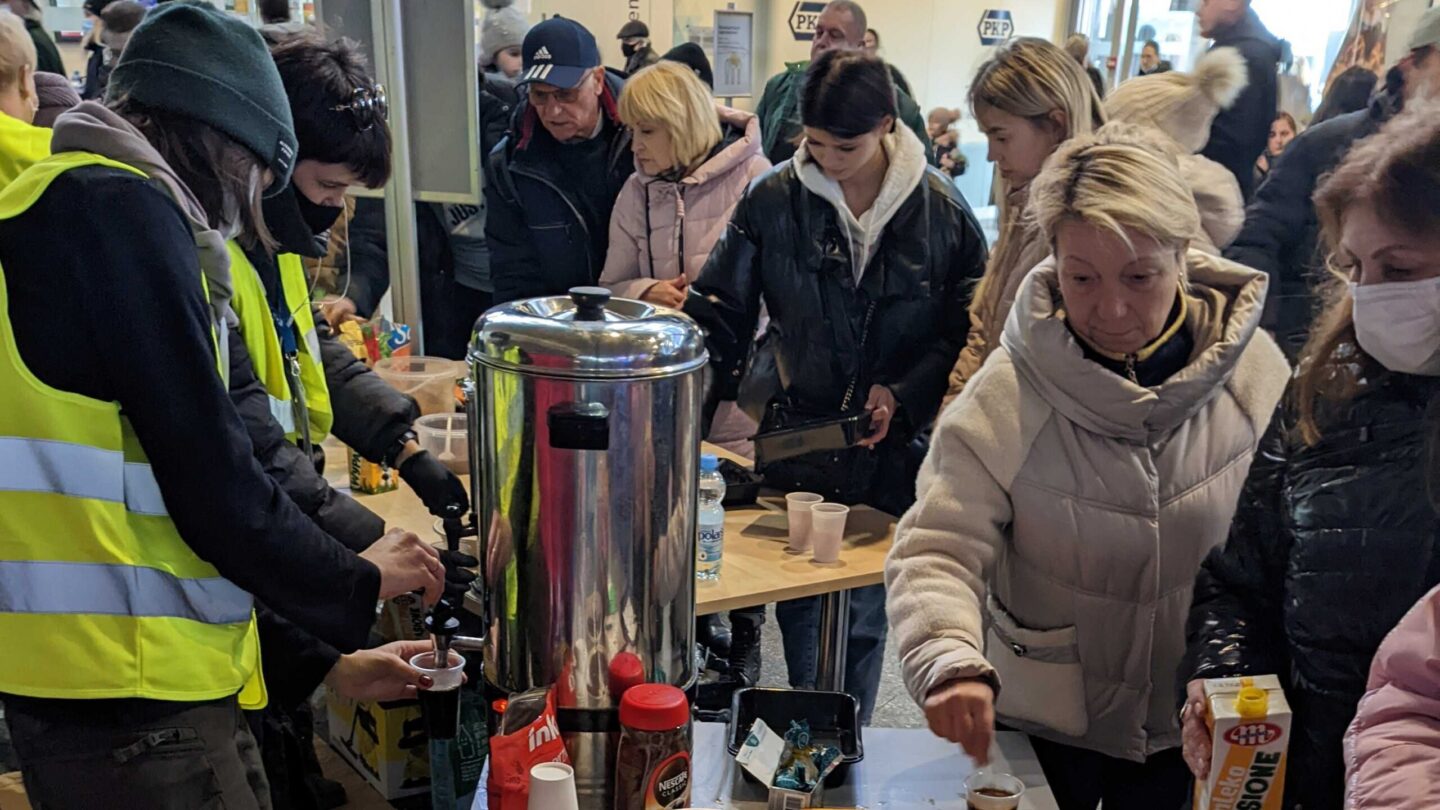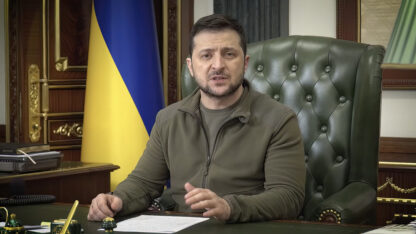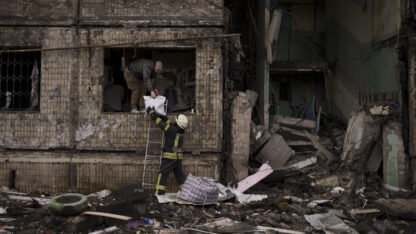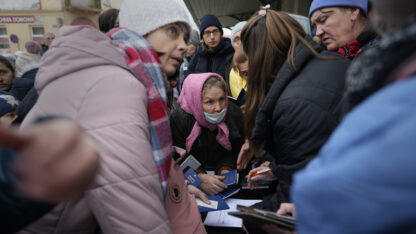WARSAW, Poland — About 3 million people have fled Ukraine since Russia’s invasion began in February, the United Nations says — a remarkable pace that has placed Ukraine among the world’s worst refugee crises.
As of Tuesday, 2.97 million people have left Ukraine since Feb. 24, according to UNHCR, the U.N. refugee agency. Another U.N. agency, the International Organization for Migration, said Tuesday that more than 3 million people have fled.
“The people who are coming over are in a bit more of a state of shock” compared to earlier arrivals after the invasion, said Matthew Saltmarsh, a spokesperson for UNHCR. “They’ve experienced conflict more directly in many cases. There often may be people with fewer means, with less financial support.”
The lion’s share have gone to Poland, where the number of refugees that have arrived – about 1.8 million – matches the population of the city of Warsaw, Poland’s capital and largest city.
In Warsaw, refugees experience kindness from volunteers and distant connections
The flood of arrivals is visible in Warsaw, where the central train station has been transformed, with information booths, volunteer translators and free coffee.
Among the refugees there is Olha Kudenko, a compliance manager who fled Kyiv three weeks ago with her French bulldog, Lion. She said she has been staying with a friend’s brother in Warsaw.
On Tuesday, Kudenko had returned to the station to find help for a friend – another young woman currently en route from Kyiv, who was traveling with just a single set of clothes, Kudenko said.
“She’s very disoriented and very scared,” Kudenko said, who was hoping to find extra clothes for her friend to wear.
In the three weeks since she left Kyiv, Kudenko said she has cried every night. “It’s very painful that somebody has the right to come to my home, to make me leave this home and destroy everything I loved and worked for,” she said.
Leaving behind their lives and families, Ukrainian refugees are left to leverage the most tenuous of connections for help. That’s been the experience of Liudmyla Zakharchuk, a 70-year-old Ukrainian woman in a black parka and pink hat, who is standing in line at a currency exchange shop with Anna Szydywar, a Polish woman in her 20s wearing a bright yellow coat.
Zakharchuk left her home in Kharkiv, Ukraine’s second-largest city, in early March, she said, after enduring nightly shelling since Russian forces invaded on Feb. 24.
“I was tired of sitting in the basement, hiding all the time,” Zakharchuk said, tears shining on her cheeks, as Szydywar translated. “Somehow the dignity of a person, of a human being, is lost.”
Her son drove her to the border with Poland. After crossing, a stranger drove her to Warsaw, she said, where she met up with Szydywar — the niece of a friend of a friend.
After a week in Poland, with the support of Szydywar and other Poles – “caring, helpful and ready to serve,” as Zakharchuk described them – she was planning to fly to Spain, where she would stay with her brother until she could safely return to Kharkiv.
“It’s a beautiful and vibrant city. I have my life there. It needs to be rebuilt after the war, so I will for sure go back home,” she said.
Services for refugees in some cities are reaching capacity
Cities near Poland’s border with Ukraine, such as Rzeszow, have swelled with refugees and humanitarian workers. Some local officials have told the U.N. they are “reaching saturation points,” said Saltmarsh, the UNHCR spokesperson.
In major cities such as Warsaw and Krakow, some services have reached capacity. Now, Polish officials are urging refugees to seek shelter in the country’s smaller cities.
“Big cities in Poland are already overcrowded. Don’t be afraid to go to smaller towns: they are peaceful, have good infrastructure, and are well-adapted,” urged a prominent sign in Warsaw’s train station.
But with tens of thousands of refugees continuing to arrive in Poland each day, Polish authorities are meeting with other officials around the European Union to find ways to spread them out. They now offer free transportation for refugees to other E.U. member countries, including eight new daily trains to Germany.
The U.N. High Commissioner for Refugees, Filippo Grandi, has previously called it the fastest-growing refugee crisis in Europe since World War II.
The vast majority of the refugees have fled for countries neighboring Ukraine’s western border. Countries in the European Union — including Ukraine’s neighbors Poland, Slovakia, Romania and Hungary — have offered Ukrainian refugees the right to live, work and receive welfare across the EU for up to three years without special legal status.
The number of refugees leaving Ukraine each day has slowed, from over 200,000 at the peak to 130,000 or less in recent days.
Saltmarsh attributed the dip to a variety of factors, including increasingly unsafe roads in eastern Ukraine and recent cold weather.
And many Ukrainians are riding out the conflict in the relative safety of western Ukraine, where airstrikes have been largely limited to military targets, he said.
“If things intensify, it’s quite possible that you might get another big push through to the border, another big number of people coming through,” said Saltmarsh.
Copyright 2022 NPR. To see more, visit https://www.npr.org.
9(MDAxODM0MDY4MDEyMTY4NDA3MzI3YjkzMw004))

9(MDAxODM0MDY4MDEyMTY4NDA3MzI3YjkzMw004))








